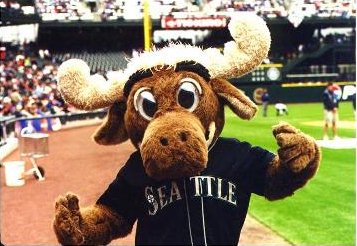If your AL-only roto league compiles equivalent stats for everyone on the roster, you know how important those $1 players can be. I've compiled a list of players that might still be available in some leagues, who could provide a little spark to your team. Here then, are those major-league bench players, middle relievers and spot starters...
American LeagueJustin Speier, RP, Angels- A very good setup man for Scot Shields who sets up K-Rod. Man, what a 'pen.
Chad Durbin, SP, Tigers- He looks like the Tigers' fifth starter until Kenny Rogers comes back in July from a blood clot. That's plenty of time to prove that he belongs in the rotation permanently.
Reggie Willits, OF, Angels- He stole 4 bases in 28 games for the Halos last year.
Chad Gaudin, SP, A's- While Esteban Loaiza is out, Gaudin will make a few starts. Then he will go back to the pen until needed as a starter again. You could definitely do worse for your 5th starter.
George Sherrill, RP, Mariners- After a terrible spring, the reliable lefty reclaims his spot in the Seattle bullpen.
Chad Bradford, RP, Orioles- He had a great year with the Mets last year. The sidearmer will give you 50+ innings of low ERA and WHIP.
Marco Scutaro, SS, A's- Bobby Crosby's recurring injuries lead to plenty of playing time for the A's "Mr. Clutch".
Victor Zambrano, RP, Blue Jays- A starter turned reliever, Zambrano has too much stuff to remain in the Jays' bullpen for long. Expect him to be starting before June.
Wily Mo Pena, OF, Red Sox- He hardly plays, but when he does, he hits Home Runs.
Jamie Shields, SP, Devil Rays- Only 25 years old, Shields had a sub-5.00 ERA and a pretty nice strikeout-to-walk ratio last year. He should get better with experience.
Fausto Carmona, SP, Indians- Carmona has put up some pretty good minor-league numbers. He starts while Cliff Lee is rehabbing.
Robinson Tejada, SP, Rangers- He shut down the Red Sox today. He shouldn't be available in deep mixed leagues, but if he is...grab him.
Jesse Crain, RP, Twins- A hard throwing righty. Joe Nathan is a Free Agent after 2008, so Crain may close for the Twinkies after that.
Boof Bonser, SP, Twins- Once a hot prospect, Bonser is just trying to settle into the Twins rotation. He's better than Carlos Silva, so his job should be safe for now.
Tony Pena, SS, Royals- The son of the former Pirates catcher, Pena culd win the Royals shortstop job outright if Berroa doesn't work out (he won't).
Ryan Garko, 1B, Indians- Tons of power make Garko a sleeper. He just needs more playing time.
Kelly Shoppach, C, Indians- Of the backup catchers in the AL, Shoppach probably has the most potential.
Jeremy Accardo, RP, Blue Jays- He had a decent WHIP last year, but his ERA was 5+. He should be better this year.
Bobby Kielty, OF, A's- Kielty mashes lefties, and is usually the first bat off the bench when the A's need an OF.
Jason Tyner, OF, Twins- In three AB this year, the speedy Tyner has two SB's already. Not a bad ratio.








